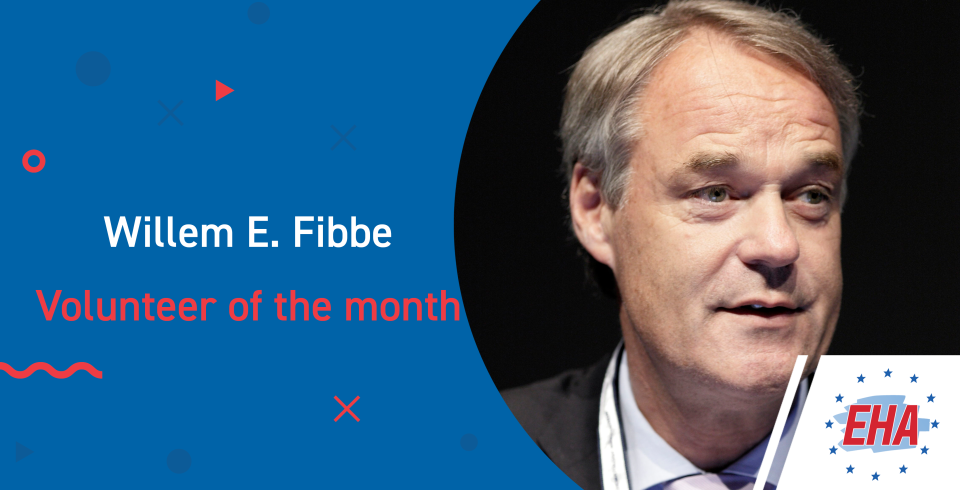This information originally appeared on the previous EHA website. Links to other pages may be inactive.

- Can you tell us what you do for EHA and when you started?
I have been involved in EHA over a period of twenty years, starting as counselor from 2000-2004. Dieter Hoelzer, one of our former presidents, became the Congress President for the 6th Annual meeting in Frankfurt and asked me to become the Chairman of the Scientific Committee, which I gladly accepted. At that time, the Scientific Program of EHA was selected in a close collaboration between the Scientific Committee and the Congress President. In addition to the regular meetings of the Scientific Committee, we had numerous small meetings in Frankfurt to discuss progress and prepare proposals for the Scientific Committee. This was the basis for my long term friendship with Dieter.
I think it was in 2005 that the Scientific Program Committee was established, being much more independent than the former Scientific Committees. At the same time, it reduced the role of the Congress Presidents in the Scientific Program and it would take a number of years before the decision was taken to further professionalize the organization of the congress and to discontinue the institute of Congress Presidents.
From 2007-2009 I served as president of EHA and overall, I spent ten years as a member of the Board. In recent years, I took other roles in EHA as Chairman of the Scientific Working Group on Mesenchymal Stromal Cells and we organized a Scientific Workshop in 2017 in Amsterdam. Before that time, the workshop was held multiple times in collaboration with the European School of Haematology. I also recently joined several committees including the Nomination Committee, Research Committee and the Governance Committee.
- How did you become a volunteer? Who helped/encouraged you to become one?
As an EHA member who attended all EHA congresses from Brussels in 1994 and beyond, I developed a sincere interest in helping organizing European hematology. After becoming a board member, it was Dieter Hoelzer who stimulated my “career” within EHA by proposing and encouraging me to become president-elect. Dieter started the annual board retreats and organized the first one, close to Milan, where he owns an old and reconstructed farmhouse. During that meeting, the Executive Board decided that Eva Hellström would become the president-elect and after her term I would succeed her.
- What is your motivation on volunteering for EHA and why you choose to serve EHA?
With the foundation of EHA, it was crucial to develop a large and important hematology organization as opposed to the American Society of Hematology (ASH). While I was also in the ASH organization, it was a real challenge to help develop the European organization. As president, I enjoyed promoting collaborations between EHA and ASH and later on also between EHA and the Japanese Society of Hematology (JSH). The interactions with people—both in the office as with the colleagues in the Board or in committees—were extremely enjoyable and have resulted in long lasting friendships.
- What does volunteering for EHA give you/do to you?
First of all, it helped me to develop a more prominent position in the international networks, resulting in very enjoyable interactions with other organizations such as ASH and JSH. I feel working for EHA has been a great privilege. It boosted my professional life and allowed me to get a closer look into other organizations and learn from it. At the same time, it started many personal relationships that I continue to enjoy.
- What would you say to others who would like to volunteer for EHA as well?
I would like to encourage the young EHA members to step up and get involved in EHA. You may consider it as something bureaucratic and you may prefer to attend the meetings and leave the rest to others. However, as soon as you get involved you will see that it will help you to advance your own professional life. It will also give you great fun, and of course, you don’t want to miss the fun.